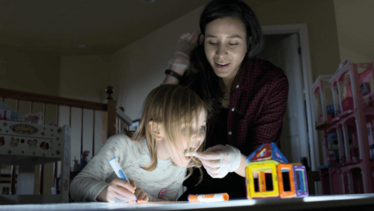Night Light: Yes, Bright Light: No!
Children’s circadian clocks are extremely sensitive to disruption
Evening or night-time exposure to bright light is known to suppress melatonin production – and result in sleep disruption. Now, research by a team at the University of Boulder, Colorado, USA, suggests that young children may be more sensitive to this effect. And it could be because of their eyes.

“We know that young children have larger pupils and clear lenses – two factors that would facilitate a greater amount of light entering the eye,” says Lameese Akacem, lead author on the associated paper. “As there is a direct connection between the retina and the body clock, more light hitting the retina likely provides a stronger signal to the clock.” Their study examined 10 children (aged 3–5 years) over a seven-day period. Over days one to five, participants followed a strict bedtime schedule to synchronize their body clocks. On day six, the children’s bedrooms were converted into dim light environments (<15 lux), with saliva samples acquired after 1 hour of dim light exposure until 50 minutes after the ‘scheduled’ bedtime. Day seven was a repeat of day six, but participants were exposed to bright light (~1,000 lux) 1 hour before bedtime (Figure 1).
They found that melatonin production was reduced by 88 percent after children were exposed to bright light, and remained significantly reduced for 50 minutes after exposure (p<0.008) – notably, 7 out of 10 failed to recover even half the average melatonin level recorded in dim light conditions. Akacem says that although they were expecting to see melatonin suppression in response to bright light, they were surprised at the magnitude. The group’s findings expand knowledge on a poorly understood area; the circadian rhythms of young children. Further studies are in the pipeline: “We are interested in measuring pupil diameter in response to different light intensities in young children to see how it relates to melatonin suppression, as well as looking at varying intensities of light in the evening and timing of melatonin onset in young children,” says Akacem. Perhaps their findings will help save many parents from sleepless nights…













